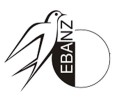The University of Otago, Department of Physics tested mud bricks supplied by the Earth Building Association of New Zealand (EBANZ) during October, 2008.
Samples
All samples were sun dried adobe bricks, nominally 280mmx280mmx130mm with varying fillers. Sample 1 was a 25% of each of sandy clay, paper pulp, sawdust and straw, and sample 2 had more straw than 1.
Method
NZS 4297 defines a presumptive thermal resistance for earthern walls, calculated below. According to 4297, other thermal resistance values may be used when determined according to NZS 4214. NZS 4214 permits the use of a needle probe test such as ASTM D5334.
The supplied samples were tested according to ASTM D5334, “Standard Test Method for Determination of Thermal Conductivity of Soil and Soft Rock by Thermal Needle Probe Procedure”. An Anter Quickline 30 was used to measure the thermal properties. Each measurement was taken in a different position in the mud brick to ascertain the variability of the sample.
The bricks were tested at the moisture level as supplied, and subsequently oven dried according to NZS 4402 to determine density and water content.
Results
| Sample | Dry Density [kg/m3] | Water Content [kg water/kg soil] | Thermal Conductivity [W/mK] 95% confidence limits | |
| 1 | 940 ±20 | 4.6% | 0.30 ±0.03 | 4 |
| 2 | 640 ±10 | 6.9% | 0.20 ±0.01 |
Thermal resistance for an equivalent wall is calculated below following NZS 4214, including air resistance of R 0.12. The table compares the test results and NZS 4297 nominal values:
| Sample | 280mm wall [m2 K/W] | NZS 4297 280mm | 350mm wall [m2 K/W] | |
| 1 | R 1.10 | R 0.7 | R 1.30 | R 0.8 |
| 2 | R 1.50 | R 0.7 | R 1.90 | R 0.8 |
Applicability
The tests results apply to these bricks. Bricks of different densities, water contents, and soil makeup will have different thermal properties.
Appendix:
NZS 4297 Engineering Design of Earth Buildings:
3.5 Thermal insulation
3.5.1
Unless determined otherwise by testing in accordance With NZS 4214, R may be taken as given by 3.5.2.
3.5.2
The static thermal resistance of walls consists of the thermal resistance of the wall material plus the thermal resistance to convection and radiation at the surfaces, the latter being expressed as a constant "air" resistance. For earth walls the thermal resistance R may be taken as 2.04 times the wall thickness in metres plus 0.12. The units are in m2 K/ W
NZS 4214 Methods of Determining the Total Thermal Resistance of Parts of Buildings:
The thermal conductivity of a material or thermal resistance of an assembly shall be determined by ... field measurements using a conductivity probe.
ASTM D5334 Standard Test Method for Determination of Thermal Conductivity of Soil and Soft Rock by Thermal Needle Probe Procedure
Overview of Procedure: Fully insert probe [Anter Quickline 30 Needle Probe] into predrilled hole, using thermal paste. Record thermal conductivity, initial moisture, and dry density. Initial moisture and dry density determined by following NZS 4402:1986.
NZS 4402: 1986 TEST 2.1 Determination of the Water Content (of soil as its percentage of dry weight)
Overview of Procedure:
Weigh specimen (Mw). Dry specimen at 105 deg C for 24 hours or until mass remains the same over a 4 hour drying period. Final mass is the dry mass (Md). Water content w = (Mw- Md)/Md. (Percentage of dry weight)
Results are consistent with those cited in the literature (Adam, 1995). See Chart 1 and 2.
Adam, E. A., & Jones, P. J. (1995). Thermophysical properties of stabilised soil building blocks. Building and Environment, 30(2), 245-253. doi: 10.1016/0360-1323(94)00041-P
.
Chart 1 – from Adams, 1995, with new data in blue diamonds. Adams data is the solid and hollow circles.
Line is DIN Standard 4102-1169 cited in Adams. Chart 2 (below) – New data alone.
Data from (Walker)
| Dry Density kg/m3 | |
| 1400 | 0.60 |
| 1600 | 0.80 |
| 1800 | 1.00 |
| 1900 | 1.30 |
| 2000 |
Walker, P., Walker, P., Industry, G. B. D. O. T. A., Keable, R., Marton, J., & Maniatidis, V. (2005). Rammed Earth (p. 146).
